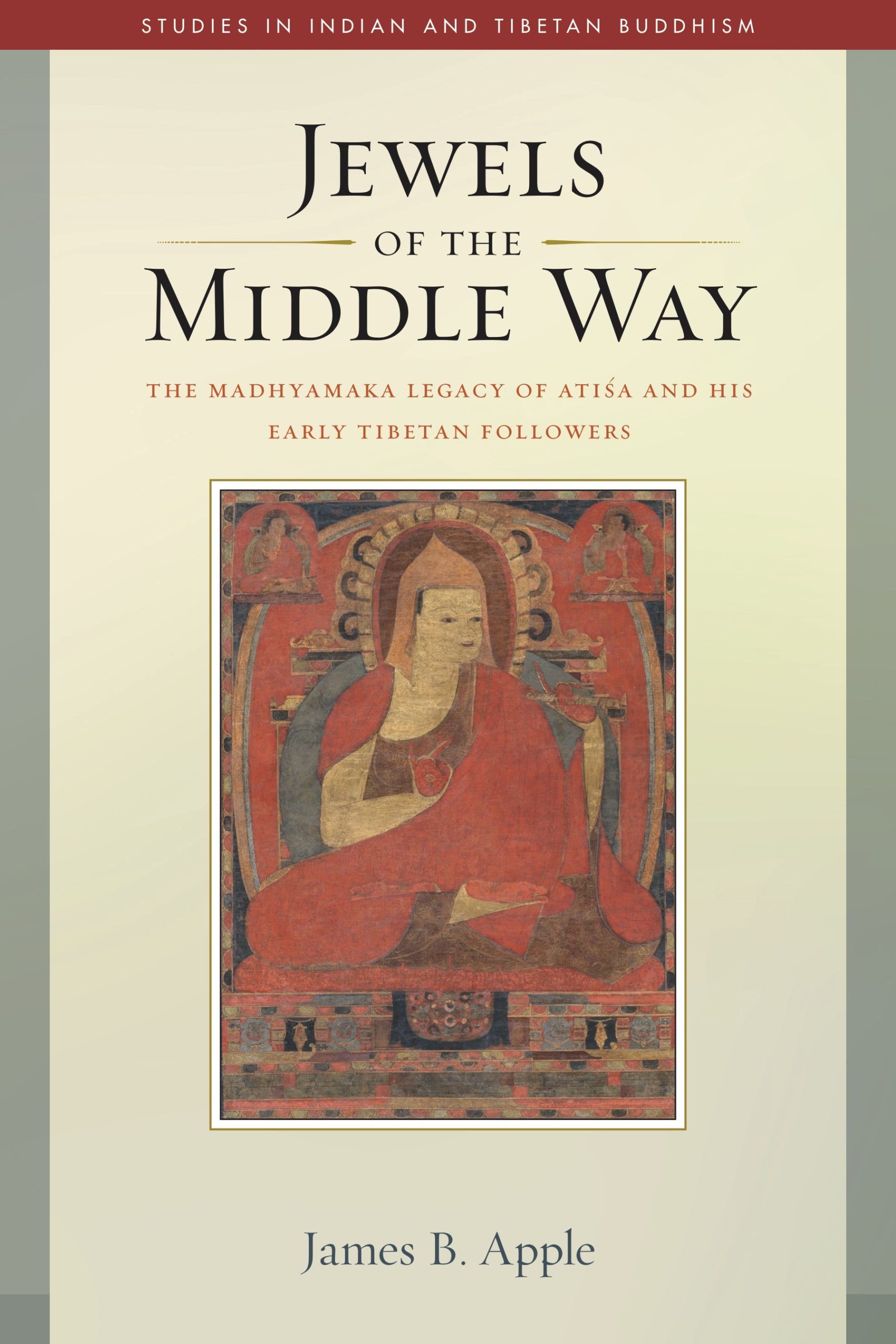The special instructions of the Mahāyāna’s Middle Way are as follows: Conventionally, all things, from the perspective of the deluded whose vision is narrow, including all presentations of cause and effect and so forth, are real according to how they appear. Ultimately or actually, when the conventional as it appears is closely examined and clarified by the great reasonings, one should thoroughly understand with certainty that even something the size of the tip of a hair that is split a hundred times cannot be grasped.
While sitting in a cross-legged position on a comfortable seat, [contemplate] for a while as follows: there are two kinds of entities, material and nonmaterial. In this regard, material entities are collections of minute particles. When these are closely examined and broken up according to their directional parts, not even the most subtle [part] remains and they are completely without appearance. Nonmaterial is the mind. In regard to this, the past mind has ceased and perished. The mind of the future has not yet arisen or occurred. Even the mind of the present is extremely difficult to examine: it has no color and is devoid of shape, since it is similar to space, it is not established, and since it is free of unity and multiplicity, unproduced, and having a luminous nature and so forth, when it is analyzed and examined with the weapon of reasoning, one realizes that it is not established.
"Nonmaterial is the mind. In regard to this, the past mind has ceased and perished. The mind of the future has not yet arisen or occurred."
In this way, when those two are not established as having any nature at all and do not exist, the very wisdom that individually discriminates is not established either. For example, through the condition of fire occurring by rubbing two sticks together, the two sticks are burned up and become nonexistent. Just as the very fire that has burned subsides by itself, likewise when all specific and generally characterized things are established as nonexistent, wisdom itself, without appearance and luminous, is not established with any nature at all. All faults such as laxity and excitement and so forth are eliminated. In this interval of meditation, consciousness does not conceptualize, does not apprehend anything at all. All recollection and mental engagement is eliminated. Consciousness should reside in this way for as long as the enemies or thieves of phenomenal marks and conceptual thought do not arise. When you wish to arise, slowly release from the cross-legged position and stand up. Then, with a mind that sees all things like illusions, do as many virtuous deeds as you are able with body, speech, and mind.
"Consciousness should reside in this way for as long as the enemies or thieves of phenomenal marks and conceptual thought do not arise."
Accordingly, when one practices with devotion, for a long time and uninterruptedly, then those with good fortune will see reality in this very life and all things will be directly realized, effortlessly and spontaneously, like the center of space. Through the attainment [of wisdom] after [meditation], all things are understood to be like illusions and so forth. From the point of time onward when the vajra-like concentration has been realized, [buddhas] will not have any subsequent attainment, as they are settled in meditative equipoise at all times.
"Through the attainment [of wisdom] after [meditation], all things are understood to be like illusions and so forth."
This article is an excerpt from Jewels of the Middle Way, by James Apple. This passage from Atiśa was translated by James Apple.
This book presents a detailed contextualization of the Madhyamaka (Middle Way) school in India and Tibet, along with translations of several texts in the Bka’ gdams gsung ’bum (Collected Works of the Kadampas), recently recovered Tibetan manuscripts that are attributed to Atiśa and Kadampa commentators. These translations cohere around Atiśa’s Madhyamaka view of the two realities and his understanding of the practice and the nature of the awakening mind.
The book is organized in three parts based on the chronology of Atiśa’s teaching of Madhyamaka in India and Tibet: (1) Lineage Masters, the Mind of Awakening, and the Middle Way; (2) Articulating the Two Realities; and (3) How Mādhyamikas Meditate. Each part focuses on a specific text, or set of texts, specifically related to Atiśa’s Middle Way. The authorship and date of composition for each work is discussed along with an outline of the work’s textual sources followed by an analysis of the content.
| There are no products in your cart. |
